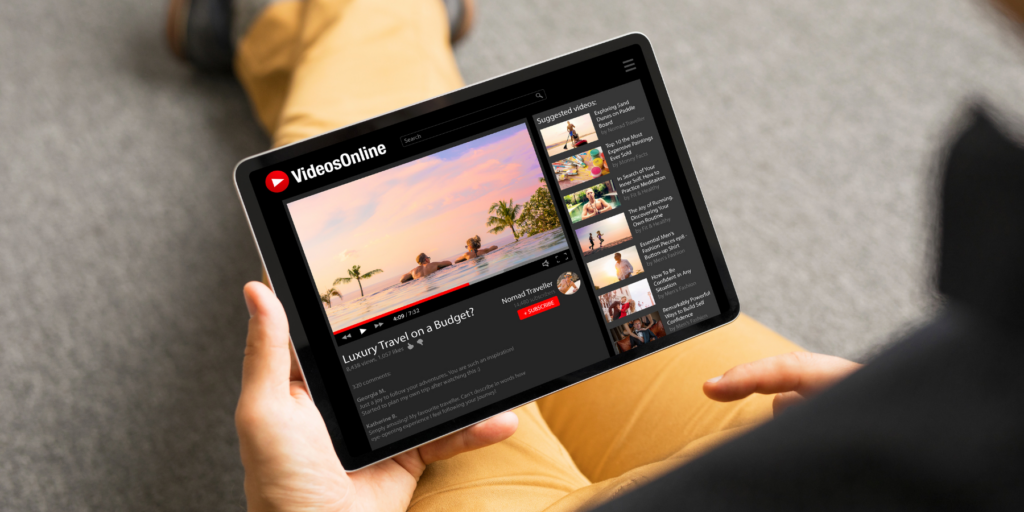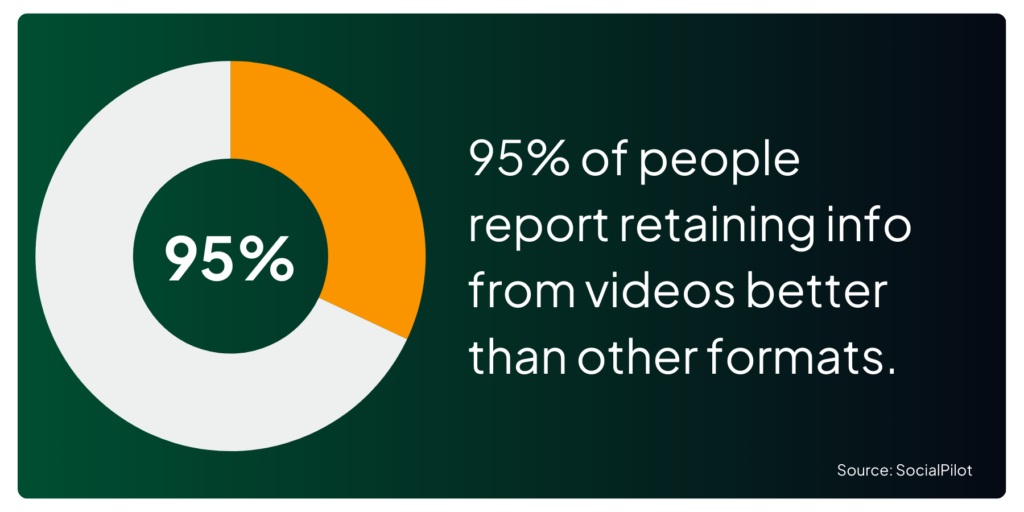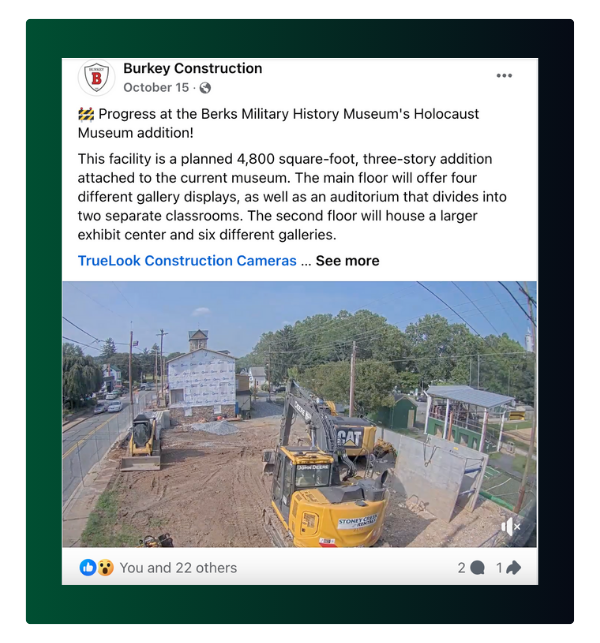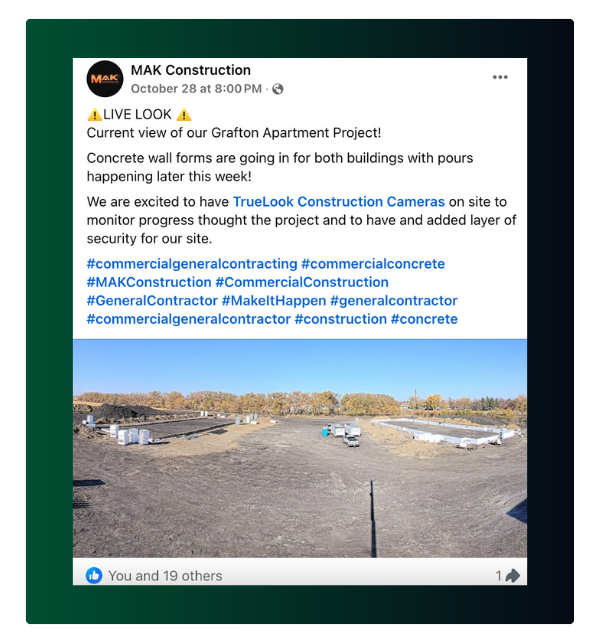
As of 2024, an estimated 91% of internet traffic was videos, with other large portions comprised of photos and gifs. That number only continues to rise as we welcome 2025, making the video medium a priority for marketing of all kinds.
What better way to highlight your team’s capabilities than with a well-crafted video? Through a variety of techniques, from time-lapse to before-and-after sliders and slideshows, you can show off your favorite projects on social media, your website, or at networking events.
Sharable and customizable content drives engagement, and companies like TrueLook are combining powerful software with high-quality construction cameras to produce top-tier videos.
In today’s article, we cover strategies for enhancing your marketing efforts with practical tips on leveraging visual content to elevate your construction company.
Best Ways to Use Video Marketing in Construction
Historically, the cost of producing high-quality videos was prohibitive for many firms, but advances in construction camera technology have changed all that. Today, advanced solutions provide live-streaming and time-lapse capabilities, high-definition image quality, and editing features that make creating videos for marketing outreach simple and cost-effective.
The best part? They can leverage footage already captured on the jobsite.
Here are several ways that your team can put footage from construction cameras to work to foster marketing gains, raise brand awareness, close more deals, and generate revenue:
Converting Prospects into Projects
Construction video marketing is a lead conversion engine, as 95% of people report retaining information from videos better than other forms of media. Video and image content supports lead conversions by building trust and transparency. Use video marketing to:
- Build trust with project documentation: Detailed time-lapse videos, before-and-after images, and slideshows demonstrate your reliability and quality. A portfolio of impressive construction projects documented with videos and photos attracts potential clients.
- Improve sales presentations: Use footage taken from your construction cameras to incorporate stunning visuals into your sales presentations, proposals, and pitch meetings. Visual proof of your capabilities enhances client confidence.
- Enhance website content: Ditch stock footage for authentic website visuals that showcase your expertise embedded directly on your website. Take your showcase to the next level with real-time camera feed links to featured projects.

Providing Real-Time Progress Updates for Clients
The construction industry depends on reliable timeframes and realistic project updates. Real-time video feeds with live updates via construction cameras keep clients informed and engaged throughout the project without requiring a constant update from managers.
Access to project views fosters transparency and builds client trust, proving there’s nothing to hide. For instance, you can share links to live feeds with invested stakeholders and team members, providing a real-time look at project progress.
Short time-lapse videos are perfect update tools because they allow you to quickly compile and share a visual progress report without requiring significant bandwidth. These videos not only provide a transparent record but can also illustrate why there are project delays, such as weather issues or delayed material deliveries.
Creating Rich Social Media Content
Social media is a digital marketing paradise: millions of daily users, free account access, paid ad support, video production tools, and seamless integration with marketing platforms. If your construction business isn’t active on social media, you’re leaving precious dollars on the table.
An active social media presence allows you to further establish yourself as a thought leader in the construction industry. You can share personal anecdotes, thought-provoking posts, and, more importantly, videos and images of your finished projects.
To make the most of your social media presence, consider implementing these strategies:
- Leverage time-lapse videos: Audiences love time-lapse videos; it’s so satisfying to see a project’s progress and the final results. Leverage that attraction by posting time-lapse videos of your projects on social media platforms with appealing posts that make your construction company more visible.
- Create engaging slideshows: See slideshow images of multiple projects with the click of a button. Share images to create impactful visual posts, showcasing the progress of projects at every stage, from empty lot to finished product.
- Share visual content across platforms: Focus on a few key platforms, like Facebook, Instagram, and LinkedIn. Learn how each works and develop content optimized for each platform, like time-lapse videos on Facebook and slideshow galleries on Instagram.
- Maximize your engagement: Optimize your time by pre-scheduling posts, incorporating high-value hashtags, including alt-descriptions, and creating attention-grabbing captions. Set aside time to engage with your audience through comments, live chats, and events.
Worried about how to create stunning time-lapse videos for your social media profiles? TrueLook makes it easy for users to create time-lapses. After simply selecting the date range and frequency preference, images are captured automatically and compiled into a video that can be viewed or downloaded at any time.


Improving Community Engagement
Every construction project investor wants to make their money back (and then some), and generating excitement is one of the fastest ways to recoup initial investments. Construction video marketing connects companies with communities, involving the public in every stage of the building process.
Integrating your construction business into the community requires a bit of effort, involving steps that include:
- Adding Live Feeds to Websites: Embed live camera feeds on company and client websites to give community members real-time updates. These are especially impactful for projects where tax money funds part or all of the construction costs.
- Sharing Progress Time-Lapses on Social Media: Share progress updates with time-lapse videos that capture major project milestones. These videos show off all of the hard work and resonate with local audiences.
- Providing News Outlets with Images and Videos: Provide curated images and video content to local media outlets to support excitement-generation efforts. TrueLook makes it easy to share videos for news sources to update the public and enhance community connection to the project.
Practical, community-oriented video marketing strategies show construction site progress in real time. Visit Hagerstown put these strategies to good use when building the highly anticipated minor league baseball venue.
The Visit Hagerstown team embedded a live feed of Meritus Park’s construction progress on a community webpage for over two and a half years, from breaking ground to completion. Powered by TrueLook, the live stream attracted over 29,000 unique viewers and generated 120,000 visits, significantly increasing web traffic and community engagement. By opening night, the community was deeply invested in the team, providing a hometown advantage to the Flying Boxcars. Read about how TrueLook helped make this success a reality!
Celebrating Project Milestones 🎉
They say a picture is worth a thousand words, but selecting the right ones can boost engagement. The most popular visual content are key moments, making their celebration even more crucial to your marketing efforts. To maximize these events, consider including some of these elements:
- Identifying Milestones to Capture: Capture significant project stages, such as groundbreaking, structural completion, and finishing touches. Produce images and videos with construction crews and share them to recognize a job well done.
- Using Visuals to Tell a Story: Photos, time-lapses, and before-and-after images tell a story of your construction projects. Use these stories to showcase client testimonials and build brand recognition.
- Highlighting Project Completion with Before-and-After Images: Use before-and-after images to share the biggest milestone—project completion. This comparison highlights the transformation and the impact of the work completed, eliciting an almost emotional response.
Analyzing Marketing Content Performance
While videos and images are power tools for your construction marketing strategy, tracking your performance is the only way to know how impactful your efforts are. Data-driven decision-making helps refine your methods, techniques, and target audience. Consider tracking some of these metrics:
- Audience engagement on social platforms: Several online platforms offer tracking capabilities, such as likes, shares, comments, views, and play counts. These numbers help you find your ideal posting time, top-performing content types, and audience profiles.
- Web traffic metrics: Website analytics provides insight into page performance, especially those with embedded videos, live feeds, or project galleries. KPIs show you where you can improve load times, SEO, and bounce rates.
- A/B Testing: Enhance your digital marketing strategy by running A/B tests to analyze the impact of video content. For example, test one set of content with video and another without to determine which drives more engagement or conversions. This approach helps refine your marketing efforts and ensures you’re using the most effective strategies to attract potential clients.
Data doesn’t lie, and adjusting your content strategy based on that data paves the way for a more refined approach to your marketing. Plus, a data-driven approach allows you to capture higher engagement and conversion rates, which are essential for growing your business.
Elevate Your Brand with TrueLook
Visual content dominates the internet. Whether it’s YouTube Shorts, Instagram Reels, or TikTok videos, people watch more content than ever, making visual marketing essential for construction companies.
Support your digital marketing plan with high-quality visual content using construction cameras from TrueLook. Our cameras and features make it easier to capture meaningful and captivating images and videos worth sharing.
Check out TrueLook’s camera features for yourself by requesting a demo and learn how you can enhance your marketing without a professional video producer!


